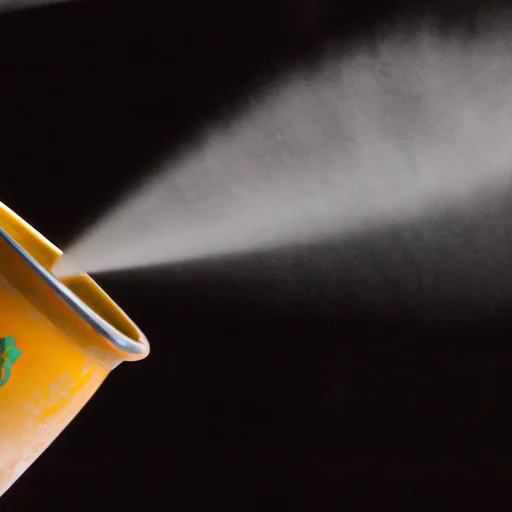Have you ever wondered if you can use regular paint in a sprayer? Well, in this article, we’re going to address that very question and provide you with all the information you need to know. From understanding the difference between regular paint and sprayer paint to exploring the benefits and drawbacks of each option, we’ve got you covered. By the end of this article, you’ll have a clear understanding of whether or not regular paint is suitable for your sprayer. Get ready to discover the world of paint sprayers!
Do You Use Regular Paint In A Sprayer
Table of Contents
Understanding Paint Sprayers
Paint sprayers are a versatile tool that can make painting projects easier and more efficient. Whether you are a professional painter or a DIY enthusiast, understanding the different types of paint sprayers available, the advantages of using them, and how to choose the right paint for a sprayer is essential. In this article, we will explore the various types of paint sprayers, the types of paint that are compatible with sprayers, and provide tips on preparing regular paint for spraying and achieving optimal results.
Types of Paint Sprayers
There are several types of paint sprayers available on the market, each with its own unique features and advantages. The most common types include airless paint sprayers, HVLP (high volume low pressure) sprayers, and compressed air sprayers.
Airless paint sprayers are known for their high-pressure capabilities, making them ideal for large-scale projects such as painting exterior surfaces or walls. HVLP sprayers, on the other hand, operate at lower pressure but with a higher volume of paint, resulting in reduced overspray and a fine finish. Compressed air sprayers use compressed air to atomize the paint and are often used for detailed or intricate projects.
Advantages of Using Paint Sprayers
Using a paint sprayer offers several advantages over traditional methods such as brushing or rolling. One of the main benefits is speed. With a paint sprayer, you can cover larger areas in a fraction of the time it would take with a brush or roller. Additionally, sprayers provide a smooth and even finish, reducing the chances of visible brush strokes or roller marks.
Another advantage of using a paint sprayer is the ability to reach difficult or hard-to-reach areas. Sprayers can easily coat surfaces with irregular shapes, corners, or intricate details, ensuring a more professional-looking result.
Choosing the Right Paint for a Sprayer
Selecting the right type of paint is crucial for achieving optimal results when using a sprayer. Not all paints are suitable for spraying, and using incompatible paint may result in clogging, uneven coverage, or poor adhesion. It’s important to choose paints specifically formulated for spraying, such as acrylic, latex, oil-based, water-based, or enamel paint.
Types of Paint
Understanding the characteristics of different types of paint can help in determining which ones are compatible with paint sprayers.
Acrylic Paint
Acrylic paint is a popular choice for many painting projects due to its versatility and durability. It dries quickly and produces a strong, flexible, and long-lasting finish. Acrylic paint is compatible with most paint sprayers and is commonly used for interior and exterior surfaces.
Latex Paint
Latex paint, also known as water-based paint, is another widely used option. It is easy to clean up, has low odor, and dries quickly. Latex paint works well with paint sprayers, especially HVLP systems, providing a smooth and even application on various surfaces.
Oil-Based Paint
Oil-based paint is known for its durability and high-quality finish. However, it is important to note that oil-based paint requires specialized equipment and thinners to be used with a sprayer effectively. Using oil-based paint without proper thinning or using it in a sprayer not designed for oil-based paints can cause clogging and result in an uneven application.
Water-Based Paint
Water-based paint, as the name suggests, uses water as a solvent. It is an environmentally friendly option that dries quickly, produces minimal odor, and is easy to clean up. Water-based paint is compatible with most paint sprayers, making it a popular choice for both indoor and outdoor projects.
Enamel Paint
Enamel paint is known for its glossy finish and durability. It is often used for surfaces that require a tough, protective coating, such as metal, wood, or plastic. Enamel paint can be used with paint sprayers, but it may require thinning or specific nozzles depending on the sprayer’s specifications.
Compatibility with Paint Sprayers
While many types of regular paint are compatible with paint sprayers, some considerations need to be taken into account.
Considerations for Using Regular Paint
Using regular paint in a sprayer requires a careful analysis of the paint’s viscosity or thickness. Some regular paints may be too thick to be sprayed effectively and may cause clogging or uneven coverage. It is advisable to consult the paint manufacturer’s recommendations for the suitable application method.
Problems with Using Regular Paint in a Sprayer
Using regular paint without proper thinning or additives can result in several problems. A thick or inconsistent paint may clog the sprayer’s nozzle, causing interruptions in the paint flow or uneven application. Additionally, the lack of additives, such as flow improvers or retarders, can lead to issues like drying too quickly or improper leveling of the paint.
Importance of Thinners and Additives
To achieve optimal results when using regular paint in a sprayer, it is often necessary to use thinners or additives. Thinners help reduce the viscosity of the paint, allowing for smoother flow and better atomization. Additives, such as flow improvers or retarders, can enhance paint performance, improve leveling, and minimize issues like clogging or drying too quickly.
Preparing Regular Paint for Spraying
When using regular paint in a sprayer, it is crucial to properly prepare the paint to ensure optimal performance and results.
Straining the Paint
Straining the paint before spraying is essential to remove any impurities or debris that may clog the sprayer’s nozzle. Use a paint strainer or filter to strain the paint into a clean container, ensuring a smooth and consistent flow throughout the project.
Thinners and Additives
If the paint is too thick for spraying, it may be necessary to add a compatible thinner according to the paint manufacturer’s recommendations. This will help achieve the proper viscosity for the sprayer. Additionally, incorporating additives can improve the paint’s flow, adhesion, and leveling properties.
Adjusting the Spray Pattern
Before spraying the paint, it is important to adjust the sprayer’s nozzle and settings to achieve the desired spray pattern. This ensures an even and consistent application across the surface. It is recommended to practice on a test surface or cardboard before starting the actual project to fine-tune the spray pattern and get comfortable with the sprayer’s operation.
Spraying Regular Paint
Proper technique and maintenance are key to achieving optimal results when spraying regular paint.
Proper Painting Techniques
When using a paint sprayer, it is important to maintain consistent speed and distance from the surface being painted. Slow and steady overlapping strokes help achieve an even and uniform coating. It is also important to keep the sprayer perpendicular to the surface to avoid uneven coverage.
Maintaining the Sprayer
Regular maintenance of the paint sprayer is crucial for optimal performance and longevity. After each use, thoroughly clean the sprayer according to the manufacturer’s instructions. This includes cleaning or replacing the nozzle, filters, and other components to prevent clogging and ensure smooth operation for future projects.
Cleaning Up After Spraying
Cleaning up after spraying regular paint is essential to prevent the paint from drying in the sprayer. Follow the manufacturer’s instructions to disassemble the sprayer and clean all parts thoroughly. Use appropriate cleaning solutions and brushes to remove any traces of paint from the sprayer’s components.
Common Questions
Here are answers to some common questions related to using regular paint in a sprayer:
Can You Use Regular Paint in a Paint Gun?
Yes, regular paint can be used in a paint gun or sprayer with the appropriate adjustments. However, it is important to consider the paint’s viscosity, use proper thinners or additives, and follow the manufacturer’s recommendations for the specific sprayer.
What Are the Recommended Paint Sprayer Settings?
Recommended paint sprayer settings can vary depending on the type of paint, sprayer model, and desired finish. It is best to refer to the manufacturer’s guidelines and conduct some test spraying to determine the optimal settings for your project.
Can I Use Exterior Paint in a Sprayer?
Yes, exterior paint can be used in a sprayer. However, it is crucial to ensure that the sprayer is compatible with the specific type of exterior paint being used. Additionally, make sure to follow the manufacturer’s instructions for any thinning or additional additives required.
Can You Use Spray Paint as a Regular Paint?
Spray paint is a different formulation compared to regular paint and is designed specifically for aerosol applications. While it is possible to use spray paint as a regular paint, it may not yield the desired results when applied with a sprayer. It is recommended to use compatible regular paint and follow the appropriate preparations and techniques.
Conclusion
Understanding the limitations and best practices when using regular paint in a sprayer is essential for successful painting projects. By selecting the right type of paint, properly preparing the paint, and using appropriate techniques, you can achieve professional-looking results. It is always beneficial to seek professional advice or consult the paint manufacturer’s recommendations to ensure compatibility and optimize the performance of your paint sprayer. So, next time you embark on a painting project, consider using a paint sprayer and enjoy the efficiency and high-quality finish it can provide.

Upgrade Your Painting Game
Explore our Introduction To The Best Paint Sprayers guide to take your projects to the next level!

